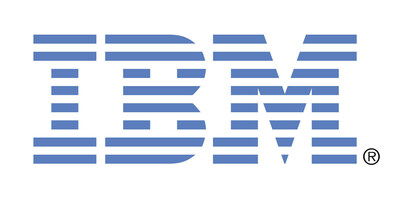Sleep problems affect more than one in five residents in long-term care facilities, with pain, daytime napping and certain medications emerging as key contributors.
An international team led by University of Waterloo researchers…

Sleep problems affect more than one in five residents in long-term care facilities, with pain, daytime napping and certain medications emerging as key contributors.
An international team led by University of Waterloo researchers…

“There are many, many things I’d change,” says Mitch Albom, discussing the notion of doing things over again.
That’s the premise of his new novel Twice, where the protagonist, Alfie, has the ability to jump back in time and, with the…

For years, scientists have known that Earth shares its orbit with a small group of space rocks known as quasi-satellites. These asteroids move around the Sun in a pattern that mirrors Earth’s path but are not bound to our planet by gravity.…

We’re a day away from another lunar phase which can mean one thing; the moon is almost half back to us. After last week’s New Moon, it’s been slowly coming back. And there is lots to find out and…

Amazon is planning major job cuts among its corporate workers as soon as this week, multiple media outlets have reported.
The online retail giant plans to lay off as many as 30,000 employees as part of cost-cutting measures led by chief executive Andy Jassy, according to the Wall Street Journal and Reuters. Each cited sources stating the same number of layoffs.
Amazon declined to comment when contacted by the BBC.
If confirmed, the layoffs could be one of the largest seen in recent months. It would be Amazon’s biggest cuts since 2022, when the company let go of around 27,000 workers over several months.
Amazon’s layoff plans were also reported by CNBC and the New York Times, citing sources familiar with the matter. The reports did not say where in the world job cuts will be made.
The number of potential layoffs would be around 10% of the company’s corporate headcount, but still a small fraction of Amazon’s total workforce, which has more than 1.5 million employees across its warehouses and offices worldwide.
The company has around 350,000 corporate workers, which include those in executive, managerial and sales roles, according to figures that Amazon submitted to the US government last year.
Like many technology firms, Amazon hired aggressively during the Covid-19 pandemic to meet the surge in demand for online deliveries and digital services.
Amazon boss Mr Jassy has since focused on reducing spending as the company invests heavily in artificial intelligence (AI) tools to boost efficiency.
Mr Jassy said in June that the increase in AI tools will likely lead to job cuts as machines take over routine tasks.
“We will need fewer people doing some of the jobs that are being done today, and more people doing other types of jobs,” he said then.


Japan will take the spotlight at next year’s Cannes market, the business hub of the Cannes Film Festival, after being named the 2026 Country of Honor — a recognition that will see the nation lead the market’s opening festivities and mount…

Could scientists find life in the clouds of exoplanet atmospheres? This is what a recently submitted manuscript hopes to address as a team of researchers investigated how the biosignatures of microbes could be identified in exoplanet…

• 66% of responding senior leaders say AI has already driven significant productivity improvements across their organization
• 41% of respondents anticipate returns on AI investments in under a year
• 72% of large enterprises surveyed (1,001 – 5,000 employees) report AI-driven productivity gains compared with 55% of SMEs
• Around 85% said interoperability, choice and transparency of AI systems is important
Oct 28, 2025
LONDON, Oct. 28, 2025 /PRNewswire/ — A new study from IBM (NYSE: IBM) reveals enterprises across Europe, the Middle East and Africa (EMEA) are already reporting significant productivity gains from using AI, with many expecting returns on their investments (ROI) within the next year. However, the findings suggest small to medium sized enterprises (SME) and public sector organizations are falling behind larger, private sector firms in boosting productivity with AI.

“The Race for ROI,” a new IBM report produced in partnership with Censuswide, surveyed 3,500 senior executives across ten countries, and reveals 66% of respondents said their organizations have achieved significant operational productivity improvements using AI.
In addition, approximately one in five respondents said their organization has already realized ROI goals from AI-driven productivity initiatives, with a further 42% on average expecting to achieve ROI within 12 months across cost reduction (41%); time savings (45%); increased revenue (37%); employee satisfaction (42%) and increased Net Promoter Score (43%).
Further productivity benefits are expected from the introduction of AI Agents, with 92% of leaders expecting that agentic AI will deliver measurable ROI within two years.
According to the study, business areas achieving the biggest AI-driven productivity gains are software development and IT (32%), customer service (32%), and procurement (27%). At the same time, executives reported the top three benefits of enhanced productivity as greater operational efficiency (55%), enhanced decision-making (50%), and augmented workforce capabilities such as automating repetitive tasks (48%).
However, the gains are not evenly distributed across all types of organizations. While 72% of large enterprises surveyed reported productivity gains from AI, only 55% of SMEs say the same. The research also indicates that public sector organizations are in the earlier stages of realizing AI’s full potential, with only 55% reporting significant productivity improvements to date.
AI Transforming Business Models
Across EMEA, the data shows that leaders are increasingly using AI to enable strategic business transformation. Of the 66% of respondents who reported significant productivity gains, nearly a quarter (24%) credit AI with fundamentally changing their business models.
Strikingly, around a third of respondents are already using AI to change their operations in ways such as accelerating innovation timelines (36%); shifting to continuous AI-driven decision-making instead of periodic planning cycles (32%); and redesigning value streams around AI rather than automating existing steps (32%, and around 2 in 5 intend to do so across all these areas.
Nearly half of all senior leaders surveyed (48%) said that AI is augmenting workforce capabilities. For example, with the time saved from greater productivity, executives said employees are spending more time on tasks such as developing new ideas (38%), strategic decision-making and planning (36%), and engaging in creative work (33%), the report finds.
Ana Paula Assis, Senior Vice President and Chair, IBM EMEA and Growth Markets, said:
“The true value of AI for business goes far beyond individual productivity – it’s about strategic transformation. Our research suggests that, while we are still in the foothills of AI adoption, enterprises in EMEA are seeing meaningful productivity gains from infusing AI into their operations, with many redesigning their business models.
“On the question of technology autonomy, the response was emphatic: enterprises want to use technology on their terms, with transparency, choice and flexibility baked in.”
Prioritizing open systems, interoperability and choice
The study found that openness, interoperability, and choice are critical priorities for all types of organizations adopting AI. 85% of respondents emphasized the importance of transparency in AI systems and models, ensuring that the technology operates ethically and responsibly. Similarly, 84% stressed the need for interoperability, enabling seamless integration of AI tools into IT systems to maximize efficiency and adaptability.
A further 85% said they valued having the flexibility to choose and adapt AI solutions or providers as needs evolve, underscoring strong demand for autonomy.
Overcoming risk and complexity
While the findings suggest companies are progressing towards greater ROI on AI, it also identified concerns about security, privacy and ethics – including the risk of data breaches and the trustworthiness of AI – as the top barrier to scaling successful AI pilots, cited by 68% of respondents. Similarly, IT complexity challenges, such as integrating AI with legacy systems, was cited by 68% of senior leaders surveyed.
To accelerate ROI from AI, the report outlines five priorities for enterprise leaders:
To discover more about how AI is helping unlock opportunities for growth and innovation in EMEA, including across major industry sectors, download the ‘The Race for ROI” report here.
Research Methodology
This report is based on a survey conducted by IBM in partnership with Censuswide in September 2025, involving over 3,500 senior business leaders (aged 25+). This included 500 respondents in each of the following markets; UK, Germany, France, UAE and Saudi Arabia and 200 respondents in Spain, Italy, Poland, Sweden and the Netherlands.
Respondents were drawn from organizations which currently use AI tools, representing a range of industries, including Finance, Public Sector, Retail, Telecoms, and Energy.
Quotas were set to ensure an even split of responses from organizations of different sizes based on number of employees. The categories were split as follows: under 250 employees, 250 – 1,000 employees, 1,001 – 5,000 employees, over 5,000 employees.
About IBM
IBM is a leading provider of global hybrid cloud and AI, and consulting expertise. We help clients in more than 175 countries capitalize on insights from their data, streamline business processes, reduce costs and gain the competitive edge in their industries. Thousands of governments and corporate entities in critical infrastructure areas such as financial services, telecommunications and healthcare rely on IBM’s hybrid cloud platform and Red Hat OpenShift to affect their digital transformations quickly, efficiently and securely. IBM’s breakthrough innovations in AI, quantum computing, industry-specific cloud solutions and consulting deliver open and flexible options to our clients. All of this is backed by IBM’s long-standing commitment to trust, transparency, responsibility, inclusivity and service. Learn more at IBM.com.
Media Contact
Gregor Hastings
IBM EMEA Communications
gregor.hastings@ibm.com
SOURCE IBM

Is there a link between “transient phenomena” detected in Earth orbit by a telescope between 1949 and 1957 and nuclear tests carried out in the past?
A new study, available in pre-print version on Scientific Report, presents results that…